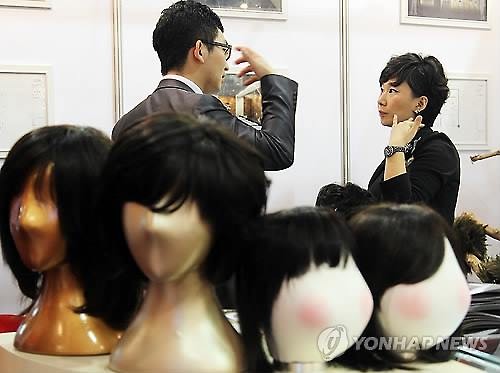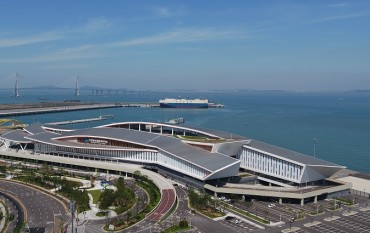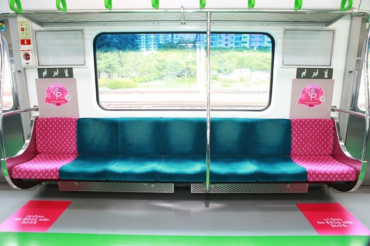
South Korea’s market for hair-loss-related products, including wigs, is currently estimated at 3 trillion won (US$2.47 billion), industry sources said Wednesday, with the figure set to increase down the road as more people in the country get stressed. (Image : Yonhap)
SEOUL, March 9 (Korea Bizwire) – South Korea’s market for hair-loss-related products, including wigs, is currently estimated at 3 trillion won (US$2.47 billion), industry sources said Wednesday, with the figure set to increase down the road as more people in the country get stressed.
The number of people suffering from hair loss is estimated at 10 million in the country with a population of 50 million, the sources added.
Hi-Mo, a leading South Korean maker of wigs, said its sales jumped 25.8 percent to 66.7 billion won in 2014, compared to 53 billion won posted in 2010. The number is estimated at 70 billion won for 2015.
Industry watchers said the sharp increases in hair-loss-related figures include many younger patients, while more females were also included in the group compared to previous years.
Hi-Mo said those in their 20s and 30s accounted for 24 percent of its clients.
“It seems that the focus of the wig market is moving from males to females, and the middle-aged to the younger generation,” an official from Hi-Mo said.
“Previously, males in their 40s bought wigs due to inborn matters. Now, the young and females are also suffering from hair loss due to stress from work or studying, and irregular eating habits,” the official added.
Following the trend, Hi-Mo said it plans to open more shops around colleges. It opened a branch last month in Sinchon, western Seoul, one of the major college districts.
The company also opened a factory in Myanmar last year with an investment of $10 million in response to the rising demand.’
(Yonhap)






